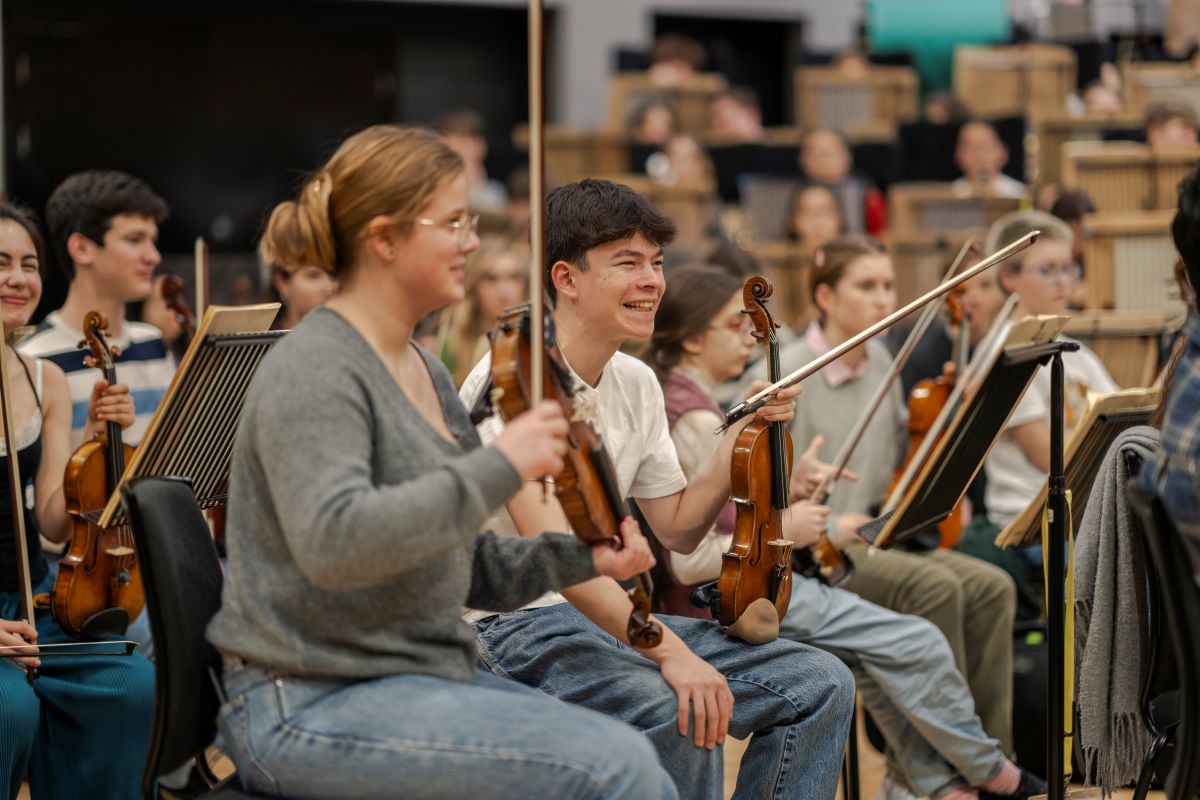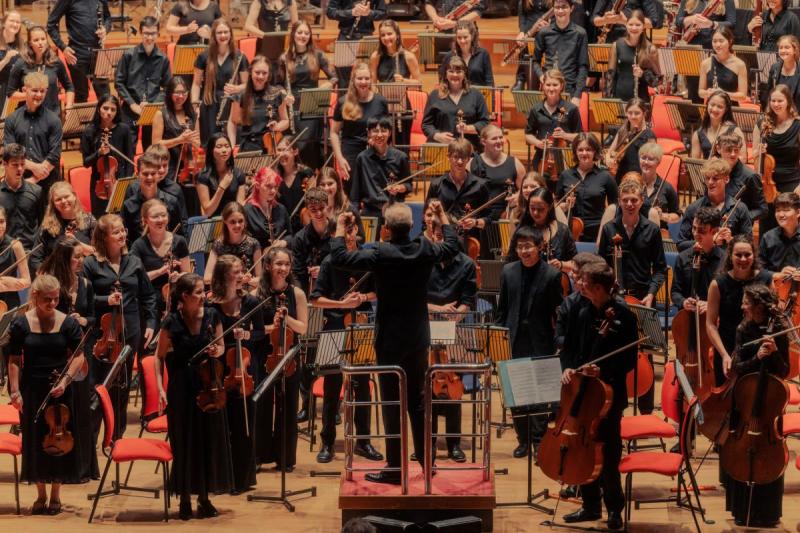
Orchestral music as an agent for change
In a radical reimagining of the classical music paradigm, Sarah Alexander shares the National Youth Orchestra’s model for engaging young people.
I have the great privilege of working with young people who love music and love playing music together. Every year the National Youth Orchestra (NYO) welcomes 10,000 teenagers from across the UK into our community to play, share and experience orchestral music. Teenagers participate as performers, creators, leaders and audiences.
NYO is this country’s leading champion of orchestral music as a powerful agent for teenage development. Orchestral music provides opportunities for young people to play an equal part in a team, working together for collective expression.
Such opportunities have been diminishing in recent years for young people at all stages of musical development. There is an undeniable lack of funding. We’re seeing young people struggle to access opportunities to have music in their lives as a force for positive change. And many musical teenagers are not reaping rewards for their curiosity and effort, in terms of music and broader life skills, confidence and optimism. Even more are not even getting off the musical starting block.
The scale of opportunity is huge
In our work, we see the reality behind the mental health statistics – 1 in 5 young people aged 17–19 experience difficulties with their mental health – and how music can play a huge part in fostering connections and counteracting loneliness and anxiety. I hope the next government understands that playing music together offers one solution to the well-being crisis currently overwhelming teenagers.
The scale of opportunity is huge. Over 90% of teenagers play, listen to or make music every week. Music is the biggest artform for youth engagement. And orchestral music is the most expansive, flexible way they can work together.
The orchestra is a creative community, whether taking on epic past masterworks or creating their music for today with a new line up of instruments. In performance, orchestral music acts as a lightning rod for shared emotion between musicians and audiences.
Systemic failures
Music education doesn’t just happen in one place. The reduction in music education provision over the last ten years is stark. We call on the next government to urgently back a creative and musical curriculum in both primary and secondary education, alongside affordable and free opportunities to learn to play musical instruments both in school and out.
42% of schools in England no longer enter pupils for Music GCSE, and A-level Music participation has fallen by 45% since 2010. There has been a 15% decline in children learning an instrument, and 80% of young people think more should be done to engage their generation in orchestral music. These statistics highlight systemic failures, with only 15% of state school students receiving sustained music education and even fewer playing in orchestras.
At NYO, our mission is to make our work – from the orchestra to NYO Inspire & Open, NYO Local and digital resources – accessible to every young person. This is what we strive towards with our live and digital work. But we need a government that will show leadership and play their part. In the meantime, we’ll continue to empower hundreds of young people to play their part as musical changemakers for their generation.
Continues…
 NYO musicisan act as role models, sharing their performances with youth audiences across the country
NYO musicisan act as role models, sharing their performances with youth audiences across the country
Role modelling is fundamental to our impact
The NYO is an inspirational orchestra of 160 teenagers, celebrated as ‘the world’s greatest orchestra of teenagers’. Beyond their impact in performance, each NYO musician plays their part as a leader through their creativity. Driven by the determination that their generation shouldn’t miss out on the excitement of this artform, NYO musicians share their performances, love of music, skills and experiences with their peers and youth audiences across the country.
As role models they share enthusiasm and skills designing and leading workshops and performances, welcoming and encouraging thousands of young people to enjoy orchestral music and aspire for their own musical progression. Teenage role modelling is the energy that fires our work. This is a radical reimagining of the classical music paradigm, focusing on the powerful impact young people can have as musical ambassadors for their generation. This model is fundamental to our impact: a blueprint for the future.
Young people in the NYO community and audiences often tell us they struggle to find the next steps in their musical development, they need other young people to show them the way. They need to see, hear and experience other young people’s creativity, sound and musical energy in action to be able to think about what’s possible. And they tell us that seeing someone like them taking a leading role inspires confidence in them to become a role model themselves. We can see this cascade this summer as 150 NYO and Inspire musicians take on a solo mission to share music with children in their own local primary schools nationwide.
We believe a simple but seismic shift is needed in arts and music education, starting right away. We need to put more trust in young people to open up their music and take the lead. Let’s give them the responsibility to share what they love with their peers. They are the artists and musicians of today. Their inspiration has never been more needed.
Sarah Alexander OBE is Chief Executive and Creative Director of the National Youth Orchestra.
![]() nyo.org.uk/
nyo.org.uk/
![]() @NYO_GB
@NYO_GB
The National Youth Orchestra with conductor Alexandre Bloch will perform at The Bridgewater Hall in Manchester on 7 August, at Saffron Hall in Essex on 9 August and finally at the BBC Proms in London on 10 August together with musicians from NYO Inspire.
Tickets to performances in Manchester and Saffron Walden are free for teens.

Join the Discussion
You must be logged in to post a comment.